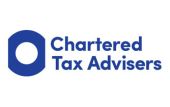
The ‘whole or main purpose’ test in relation to share exchange: recent case law
Key points
- Consider the ‘whole or main purpose’ test with regard to share exchange.
- Read the Upper Tribunal decision in Coll v CRC [2010] STC 1849.
When companies are sold, part of the consideration is often in the form of shares or debentures issued by the buyer company. This is referred to as a ‘share exchange’, as the vendor is selling their shares to the buyer in exchange for an issue of either shares or debentures by the buyer. Generally speaking, this element of the transaction is treated as a non-event for the purposes of the tax on chargeable gains, with any tax liabilities accruing, instead, on the eventual disposal of the newly issued shares or debentures, such as on redemption of the debentures. In many cases this represents simply a deferral of the tax charge, but, as we will see when discussing two recent decisions, under certain circumstances the share exchange rules lead to an absolute tax saving.
These rules apply so long as the share exchange is carried out ‘for bona fide commercial reasons and does not form part of a scheme or arrangements of which the main purpose, or one of the main purposes, is avoidance of liability to capital gains tax or corporation tax’ (TCGA 1992, s 137(1)). The second leg of this test is often referred to as the ‘whole or main purpose test’, and similar tests are found throughout the tax code. In particular, the same test applies to schemes of reconstruction and a similar test is found in the transactions in securities legislation, which asks whether ‘the main purpose, or one of the main purposes, of the transaction in securities, or any of the transactions in securities, is to obtain an income tax advantage’ (ITA 2007, s 684(1)(c)).
Two recent decisions explain the current judicial approach to the whole or main purpose test.
Wilkinson
The First-tier Tribunal decision in this case (TC8887) is what originally prompted the writing of this article. Mr and Mrs Wilkinson together owned about 58% of the shares of Paragon Automotive Ltd (Paragon), a trading company. The company was sold in July 2016 and the consideration for the transaction was £130m, of which Mr and Mrs Wilkinson would have been entitled to around £75m. The initial proposal from the buyers was to pay £60m cash, to issue £40m of loan notes and for there to be an earn-out of up to another £30m.
The shareholders would generally have expected to claim entrepreneurs’ relief, the 10% rate of capital gains tax, subject to a maximum lifetime allowance per individual of £10m, saving up to £1m each. (Readers will be aware that the relief is now called business asset disposal relief, and the lifetime allowance is £1m.)
Given that both Mr and Mrs Wilkinson would substantially exceed their lifetime allowances for entrepreneurs’ relief, Mr and Mrs Wilkinson gave Paragon shares worth £10m to each of their three daughters immediately prior to the sale. The purchaser company, TF1 Ltd, bought all the shares of Paragon, the consideration being in the form of cash, loan notes and earn-out for Mr and Mrs Wilkinson and the other shareholders. The consideration for the daughters, however, was £10m in loan notes, and B shares in TF1 equating to 5% of the ordinary share capital of that company and giving them 5% each of the voting rights in that company. Furthermore, each of them was appointed as a director of a subsidiary of Paragon. When the daughters disposed of those shares just over a year later, they qualified for entrepreneurs’ relief on the £10m proceeds that they each received. (Again, readers will recall that the qualifying period for relief was only a year at that time.)
Mr and Mrs Wilkinson therefore received cash and ‘earn out loan notes’ in the transaction and each of the daughters received, as noted above, shares and loan notes. Mr and Mrs Wilkinson self-assessed an appropriate capital gains tax liability for 2016-17 in respect of the cash element, but not in respect of the loan notes, as they would not expect to compute a capital gain until the loan notes were redeemed. Similarly, the daughters did not self-assess any capital gains tax liabilities in 2016-17. Instead, they self-assessed a liability to capital gains tax, in 2017-18, subject to entrepreneurs’ relief, when the shares were sold, and the loan notes were redeemed.
HMRC took the view that one of the main purposes of the share exchange was the avoidance of capital gains tax, and therefore denied the rollover treatment. They therefore raised assessments to bring the whole of the consideration received by both Mr and Mrs Wilkinson and their daughters into 2016-17. For Mr and Mrs Wilkinson, this simply represented an acceleration of the capital gains tax charge. For their daughters, however, this also meant that the capital gains tax charge was at 20%, as a disposal in 2016-17, when they had only held the shares for a few days, would not qualify for entrepreneurs’ relief.
The question before the tribunal was whether one of the main purposes of the share exchange transactions on disposing of Paragon was the avoidance of capital gains tax.
Arguably, there was nothing objectionable in Mr and Mrs Wilkinson’s transactions, as they simply received cash and loan notes in a relatively straightforward way. The reason HMRC denied the rollover treatment to them was based on the Upper Tribunal decision in Coll v CRC [2010] STC 1849, which said that the test in TCGA 1992, s 137(1) applied to the whole transaction, and could not be applied separately to each individual shareholder depending on their motives. It was, therefore, sufficient that the transactions had a whole or main purpose of avoiding capital gains tax for any one person to deny the rollover treatment to all the relevant shareholders. (The case report notes that the other shareholders held shares that were subject to EIS relief, which was subject to separate rules whereby they were never entitled to rollover relief, but any gains on the sales of their shares were, in any case, exempt from capital gains tax.)
HMRC’s first argument was that, in determining whether there was a scheme or arrangements, it is necessary to look at the specific arrangements that lead to the tax saving (similar to their arguments in Euromoney, of which, more below) and to consider whether the share exchange was a part of those arrangements. They contended that the arrangements – whereby Paragon shares were given to the daughters, the shares were then sold in return for shares and loan notes in TF1, and the newly-issued TF1 shares were sold and the loan notes redeemed just over a year later – were the arrangements that the tribunal should concentrate on.
The tribunal dismissed HMRC’s arguments, saying the planning was simply designed to reduce the Wilkinson family’s overall CGT liability in the event of the sale of their shares to a third party and was not a ‘scheme or arrangements’ distinct from that wider transaction. Conversely, if the Wilkinson tax planning could be considered in isolation, the significantly larger share exchange did not form part of those arrangements, largely because it involved other shareholders who were otherwise not interested in the Wilkinson tax planning. Finally, the tribunal noted that the statutory wording does not allow them ‘to posit subsidiary or part-related schemes or arrangements’.
Having decided that the only scheme or arrangements under consideration was the sale of the shares of Paragon by all parties, that being ‘the exchange’ referred to in TCGA 1992, s 137(1), the tribunal considered whether the avoidance of tax by the daughters, or by the Wilkinson family as a whole, was one of the main purposes of the deal. The main thrust of their decision that it did not form one of the main purposes was that the amount of tax saved, £3m, was relatively insignificant in the context of a transaction worth £130m and, even if the Wilkinsons’ share of the proceeds was taken in isolation, it only formed about 4% of the total of £73m received by the family. Furthermore, both the heads of terms and the sale and purchase agreement demonstrated that neither the planning itself, nor whether it succeeded, were essential elements of the transaction. Finally, it was noted that the correspondence between Mr Wilkinson and Mike Warburton – described as a ‘longstanding trusted adviser to Mr Wilkinson’ – made it clear that, even if the buyers did not accept Mr Wilkinson’s tax saving proposals, the deal would have gone ahead. In other words, even to Mr Wilkinson, who was the architect of the planning, the tax saving arrangement involving his daughters was by no means essential to the sale going through.
In conclusion, therefore, the appeals were allowed, although the tribunal explicitly found that the avoidance of capital gains tax was a purpose of the deal, even though it was not the whole purpose or a main purpose. So, the Wilkinson’s appeal succeeded, at least in front of the First-tier Tribunal.
Per curiam, readers will be aware that it is usual in these cases to apply to HMRC for a pre-transaction clearance that HMRC agrees that the transaction is being carried out for commercial reasons and not as part of a scheme or arrangements to avoid tax (TCGA 1992, s 138). It appears that, in this case, no such clearance was sought from HMRC because of the short timescale in which the transaction was concluded. However, this sale was the culmination of a series of aborted transactions over the previous year or so and, in respect of one of these proposed sales, clearance had been obtained from HMRC despite the fact that the transaction included very similar planning involving the transfer of £10m worth of shares in Paragon to each of the daughters in order to obtain similar tax savings. However, the case report does not give any detail as to the precise arrangements that were proposed and nothing in the First-tier Tribunal decision hung on this fact.
Euromoney
A few weeks after the First-tier Tribunal decision in Wilkinson, the Court of Appeal released its decision in a case on a very similar point, Delinian Ltd (formerly Euromoney Institutional Investor Plc) [2023] EWCA Civ 1281 (referred to in this article as Euromoney). Once again, this case involved a share exchange transaction and whether the arrangements introduced into the transaction to save tax (in this case by taking advantage of the substantial shareholding exemption) constituted the whole or a main purpose of the exchange. The company that was then called Euromoney was selling shares in a subsidiary called Capital Data to a company called Diamond for just over US$80m. About US$21m was to be in cash, with the remainder in shares to be issued by Diamond. However, the deal was amended so that the US$21m was received in the form of redeemable preference shares of Diamond, instead. On the redemption of those shares a year later, the substantial shareholding exemption applied so that the gain on the redemption was exempt from corporation tax. Once again, therefore, we have an absolute saving of tax, not simply a deferral.
HMRC took the view that the tax planning meant that one of the main purposes of the share exchange was the avoidance of corporation tax and issued an assessment to corporation tax on chargeable gains of c£10.5m. It is also noteworthy that Euromoney applied for pre-transaction clearance for the transaction. Clearance was refused but they went ahead, anyway.
On appeal against the assessment, the First-tier Tribunal agreed that corporation tax avoidance was a purpose of the arrangements, as that was the only reason for part of the consideration being in the form of preference shares, and not cash. But these arrangements ‘were not significant in the context of the arrangements as a whole’, so the decision was ‘that avoiding liability to corporation tax on chargeable gains was a purpose, but not one of the main purposes, of the arrangements’. The tribunal considered the High Court decision in Snell 78 TC 294, where Mr Snell sold 91% of the shares of the company he owned (the other 9% being held by his sons) and received the consideration in the form of loan notes. He fulfilled a longtime ambition to go and live outside the UK, as a result of which, when the loan notes were redeemed, he was outside the scope of capital gains tax. In that case, HMRC succeeded in their argument that the arrangements to avoid capital gains tax (by deferring the gain into loan notes and arranging for the redemption to be at a time when he was not subject to UK tax), were a main purpose of the share exchange. As a result, HMRC succeeded in denying Mr Snell the rollover into the loan notes, and the entire gain was charged to capital gains tax at the time of the original exchange. It is, perhaps, reasonably easy to agree that arrangements to ensure that 91% of the proceeds would escape taxation could be said to be a main purpose of the share exchange transaction. But this case clearly contrasts with the proportionately smaller level of benefit in Wilkinson (£3m out of £130m) or Euromoney (US$21m out of US$80m).
The Upper Tribunal confirmed the First-tier Tribunal’s decision. They considered HMRC’s approach (similar to that taken in Wilkinson) that the purpose test ‘should be applied to all possible schemes or arrangements of which the exchange could be seen to form part’ but decided that they were required to look only at ‘the purpose or purposes of the totality of the scheme or arrangements’. The First-tier Tribunal had found ‘that the avoidance of tax was not one of the main purposes of the arrangements as a whole’, so HMRC’s appeal failed.
The Court of Appeal noted that these decisions in effect found that there was only one ‘scheme or arrangements’, being the entire transaction of which the exchange formed part.
HMRC’s argument in the Court of Appeal was ultimately just another attempt to persuade the judges that a relatively small part of the transaction could be the subject of the tax avoidance test. The argument was that there is a qualitative difference between ‘the exchange’ and ‘a scheme or arrangements’ that led to the avoidance of CGT. In identifying the exchange, the motives are not relevant (although it is important that the exchange is carried out for commercial reasons). However – following the High Court decision in Snell – a scheme is ‘a plan of action devised in order to obtain some end’ and an arrangement is ‘a structure or combination of things for a purpose’. Thus, a scheme or an arrangement must be identified by reference to those purposes and motives and a single exchange may form part of more than one scheme or arrangement.
The court, however, considered the case to be simply a matter of statutory construction of TCGA 1992, s 137(1) which they said was ‘not complicated’. In contrast, the language used by the court in this judgment is, at times, somewhat impenetrable. However, I have done my best to simplify the reasoning, as follows:
- Firstly, the court noted that it is only necessary to find a single scheme, or arrangements intended to avoid tax. If there is one, we must ask if the share exchange forms part of that scheme or arrangements and, if it does, then no deferral of tax is permitted.
- Secondly, in my favourite passage in the judgment, the court said that it is not a natural use of language ‘to describe an exchange as forming part of a tax avoiding part of an overall scheme or arrangements or even part of an exchange as forming part of a tax avoiding part of an overall scheme or arrangements’. It is, however, natural to ask whether the entire exchange forms part of the whole scheme or arrangements that has a main purpose of tax avoidance.
- Thirdly, if HMRC’s view were correct, ‘a taxpayer would find itself unable to avail itself of the statutory deferral if a tax avoidance motive, which might be minimal when viewed in light of the overall scheme, could be found for an insignificant part of the arrangements’. In other words, the court is saying that the provision would effectively be useless if the tax deferral could be denied if even an insignificant part of the arrangements could be characterised as a scheme or arrangements with a tax avoidance motive.
Perhaps the easiest passage to follow is where they apply their reasoning to the transaction in point, at paragraph 48:
‘Fourthly, the example of this case makes the point. HMRC says that the scheme in question is just the replacement of the US$21m with preference shares. HMRC contends that the emails show that that step was for tax avoidance purposes. Whilst that is true, it is not a natural use of language to say that the entire exchange of Euromoney’s shares for the ordinary and preference shares in Diamond formed part of the scheme to replace the US$21m cash payment originally agreed with preference shares to the same value. Commercially, the preference shares were different from cash and carried some different (probably greater) risks. But the statute is not asking the FTT to break down the negotiation of either an exchange or a scheme. It is simply asking whether the entire exchange agreed did or did not form part of an entire scheme or arrangements of which the, or a, main purpose was tax avoidance.’
I believe that the court is saying that there is just one ‘scheme or arrangements’, being the sale of the shares of Capital Data, and the exchange formed part of that. Implicitly, the court is agreeing with the tribunals that, while an element of the transaction was intended to avoid corporation tax, this was not a main purpose of the exchange.
Taking a purposive, rather than a literal construction of the legislation, the court also noted that the anti-avoidance rule clearly envisages the possibility of tax avoidance, but the tax deferral is still allowed, so long as the tax avoidance ‘is not the sole or a main purpose of the scheme or arrangements. Parliament’s purpose is clear from the language used’.
Thus, HMRC’s appeal was dismissed.
Overview of the cases
Overall, both cases reach the same conclusion. In the transactions concerned, the decision was that there was only one scheme or arrangements in each case and, ostensibly, given the relatively small tax savings in each case, compared to the value of the overall transaction, the tax savings were considered not to be one of the main purposes of the overall scheme or arrangements. Actually, as explained below, the answer is more nuanced than that, but this is many people’s takeaway, especially from the Wilkinson decision.
HMRC would like to be able to look at individual components of the transactions and treat specific elements as being a separate ‘scheme or arrangements’ that have as a main purpose the avoidance of tax. In a sense, that is a reasonable analysis of what happened in both cases, but it would be incorrect to say that ‘the exchange’ was part of any smaller ‘scheme or arrangements’, because both exchanges involved a majority of shares that were not involved in the tax avoidance element. In other words, the exchange, being the exchange of all the shares of the companies in each case, did not form part of a scheme or arrangements that had a main purpose to avoid tax in either case.
Taking HMRC’s position to an extreme, although it wasn’t explicitly stated, I would suggest that they would like to look at each exchange as comprising several smaller exchanges. For example, in the Wilkinson case, they might want to look at the exchanges by the daughters as being separate exchanges that were part of a scheme or arrangements to avoid capital gains tax. Similarly, in Euromoney, they might want to treat the exchange in return for preference shares in Diamond as being a separate smaller exchange which was part of a sub-scheme or arrangements to avoid corporation tax, separately from the larger exchange of shares for ordinary shares in Diamond. The view of the judiciary, however, is that it is not possible to break things down this way. Where there is a single transaction, it is necessary to look at the entire exchange and ask whether it is part of the whole scheme or arrangements, and if the whole scheme or arrangements has a main purpose of the avoidance of tax.
Perhaps the more interesting question in this context is to ask what the difference is between a single transaction – albeit with several vendors (as in Wilkinson) and different forms of consideration (in both cases) – and several transactions, each of which can be viewed separately? Are they single transactions just because there is a single sale and purchase agreement (SPA) in each case? What if TF1 had negotiated separately with the Wilkinson daughters and concluded a separate agreement with them? Or if Euromoney and Diamond had entered into two separate SPAs? I hope we do not have to answer these questions but, as a practical note, perhaps we would always be safer negotiating a single multi-party deal with a single SPA.
Will the cases be appealed?
At the time of writing, while the taxpayers have won both cases, the amounts at stake, and the principles involved, are such that HMRC may appeal the decisions, so these cases might not be the last word(s) on the subject. That said, the decisions both appear to reflect the plain words of the legislation and the intention of parliament when the legislation was enacted in 1977 (FA 1977, s 40(2) and s 41(1)).
I think it’s also significant that the tribunal decisions in Euromoney were considered by the First-tier Tribunal in Wilkinson, and it’s clear that the requirement to look at the whole transaction, rather than its component parts, and at the quantum of the tax benefit in that context, were the main elements in the decision in favour of the Wilkinsons in their case. Since the Court of Appeal also found for the taxpayer in Euromoney, it seems that HMRC’s scope for an appeal against the Wilkinson decision is reduced, unless they also successfully appeal Euromoney to the Supreme Court.
What are the common features?
The proportionate savings were discussed in both cases as a factor in the decisions. In Wilkinson the saving of £3m out of £130m transaction value (or even out of the £74m due to the Wilkinson family) is clearly a relatively small proportionate saving. But the saving in Euromoney was much more substantial, as the shares on which corporation tax on gains was avoided amounted to 26% of the value of the transaction overall.
This line of analysis is further complicated by the decision in Snell and Snell v CRC SpC 699 [2008] STC (SCD) 1094 (not to be confused with the High Court case of Snell referred to above). In that case, the actual tax saving was small in absolute terms: £12,500 tax saved in a £1.4m transaction. However, it was clear from the correspondence that any tax saving was important to Mr and Mrs Snell, so the Special Commissioner had no difficulty in finding that the tax saving was, indeed, one of the main purposes of the transaction, despite the relatively small saving.
One obviously important feature in both the recent cases is that the tax saving was not considered essential, or a ‘deal breaker’ in the context of the overall transactions. For example, in Wilkinson it was noted that Mr Wilkinson would ‘walk past’ the tax saving if it put the overall transaction in jeopardy.
And in Euromoney the First-tier Tribunal found that ‘the potential tax saving was not important’ and that the deal would have gone ahead even without the preference shares. In contrast, in Snell and Snell, the advisers even went to the lengths of asking HMRC how much tax-free cash would be acceptable as part of the transaction!
The other common feature was the effort involved in achieving the tax saving. In Wilkinson the FTT noted ‘the relatively low legal and commercial effort and expense put into the ER structuring’ and said that this ‘similarly confirms the fact that this was not essential to the deal and not a main purpose’. And in Euromoney the FTT said that ‘Euromoney devoted limited resources to the tax aspects of the transaction’.
From this we can infer that, while the absolute or proportionate amounts of tax saving are a consideration, it is equally important to consider how much of the effort in planning the transaction related to the tax saving element, and whether the transaction would have otherwise been jeopardised had the tax saving not been achieved. So, the question of whether something is the main purpose is a multifactorial question, with the quantum of the tax saving, or the overall proportion of tax saved, being but one of the factors to take into account.
The ‘form part of’ requirement
An area I found particularly interesting in this case is the detailed analysis of the words of the legislation, itself. The statutory test (TCGA 1992, s 137(1)) has two elements: the requirement for a bona fide commercial purpose for the exchange (or scheme of reconstruction) and the presence of a scheme or arrangements to avoid tax (specifically capital gains tax and corporation tax, although the almost identical test at TCGA 1992, s 139(5) also refers to income tax). But it is not always appreciated that the exchange or scheme of reconstruction must ‘form part of’ the scheme or arrangements to avoid tax. This was the basis of HMRC’s arguments in favour of breaking down the elements of the transactions in each of the cases, rather than considering the transactions as a whole.
In Wilkinson, for example, there was no suggestion that the overall transaction was designed to avoid tax, as it was only the element involving the shares worth £30m that were transferred to Mr and Mrs Wilkinson’s daughters that led to any loss of tax. So, it would be very difficult to say that the exchange element in the transaction - involving the £70m of loan note and earn out consideration - ‘formed part of’ the arrangements to save £3m tax for the Wilkinson family. Quite the opposite, in fact, as one could much more easily argue that those tax arrangements formed part of the overall exchange transaction. But that is not the test. Similarly, the exchange in Euromoney did not form part of the extra arrangements to save corporation tax on gains of just over a quarter of the transaction, although that element might be said to have formed part of the overall exchange, instead.
In contrast, in Snell, the High Court effectively decided that Mr Snell entered into a scheme whereby he sold the shares in his company in a form that deferred the crystallisation of a capital gain until he was out of the reach of HMRC, so the share exchange clearly did ‘form part of’ the scheme or arrangements to avoid capital gains tax. (This element is rather different in Snell and Snell, as the challenge there was under the transactions in securities legislation - in its pre-2010 form - at a time when that legislation asked, ‘whether the main object, or one of the main objects, of the transaction was to enable a tax advantage to be obtained’. So, in that case, there was no element that had to form part of some wider arrangements, it was only necessary to look at the main objects of the transactions in securities.)
Why now?
A friend (you know who you are) who was commenting on a draft of this article asked this question. The legislation has been in place since 1977 and this point has not (so far as we are aware) been raised before. But suddenly (in tax terms), over 40 years later, we have two cases where HMRC are arguing that s 137(1) should be read in a way that is the reverse of the way that it is actually written.
Has there been a change of policy? Were the cases so ‘blatant’ in HMRC’s view, that they just could not let them go? Is this simply an increased focus on the possibility of enhancing the tax take by challenging transactions where there is a partial tax avoidance motive? We will probably never know, but it is interesting in this context to remind readers that HMRC granted clearance for a sale of Paragon that included apparently similar tax planning only a few months before the sale to PF1. So, their change of mind was fairly sudden.
Conclusions
As already noted, there might be further decisions in these cases, so we don’t know if future judgments might come up with different results or, even if the results stay the same, whether there will be different ratios to consider. For the moment, however, I think the main lesson here is that a number of factors will be involved in deciding whether a tax saving is a whole or main purpose of a transaction. These will include the proportion or quantum of tax savings, as well as factors such as whether the tax planning is sufficiently important to jeopardise the transaction as a whole, how much planning was put into it, and no doubt other factors that will emerge in future scenarios.
In the context of share exchanges and schemes of reconstruction, we also have the requirement that the exchange or scheme of reconstruction must form part of the arrangements to avoid tax. Despite their best efforts in these cases so far, HMRC has not been able to demonstrate that the wider commercial transactions can somehow form part of the scheme or arrangements to avoid tax, particularly where those arrangements were tacked on at the last minute. Looking at it that way, it almost becomes obvious that the tax savings were not main purposes of the overall transactions.
Of course, it is always open to HMRC to suggest to parliament that the law might be changed in this area (perpetuating the myth that parliament makes tax policy). If this were so, I can imagine it would be quite difficult to draft such legislation, but I would assume that the result that HMRC would prefer is one which allows them to pick apart the elements of the transaction and only challenge the tax savings arising from what they see as offensive sub-schemes or arrangements. This is not something I particularly want to see, but it’s difficult not to have a bit of sympathy for HMRC in these cases, and to understand why they might want to be able to dissect transactions to prevent what they see as unwarranted tax savings obtained by the Wilkinson family and by Euromoney.








